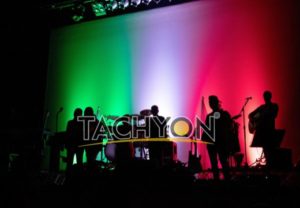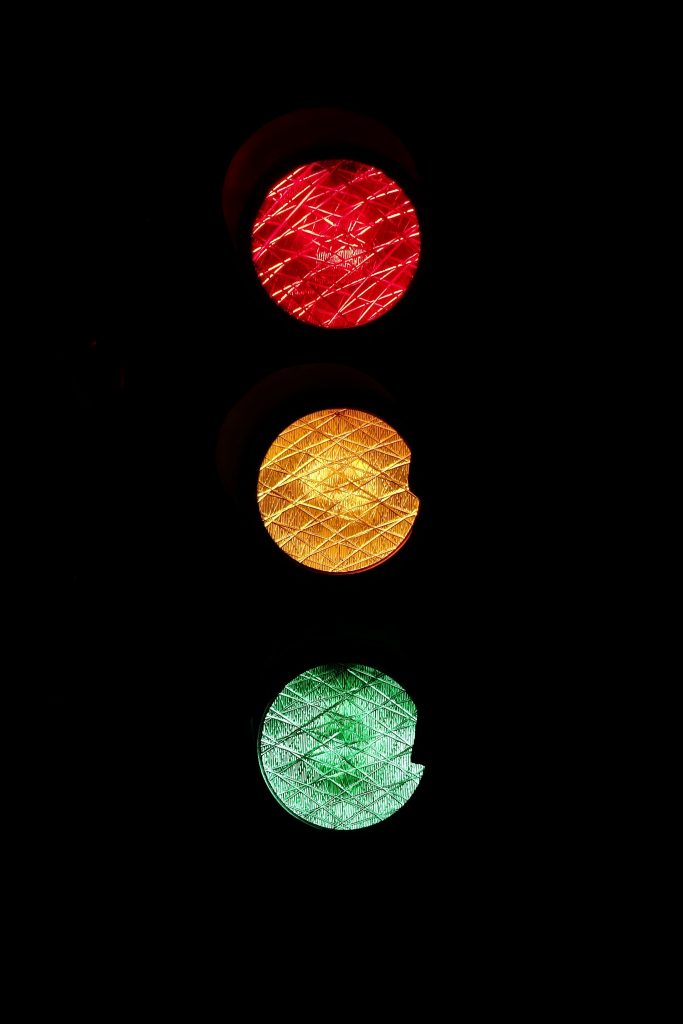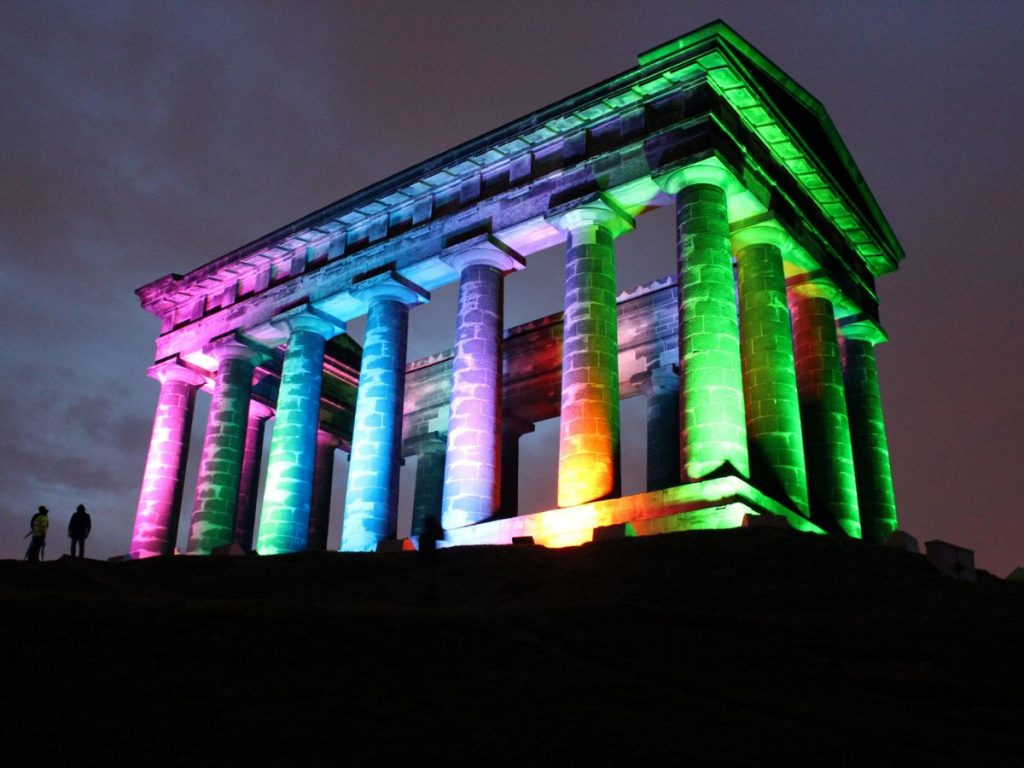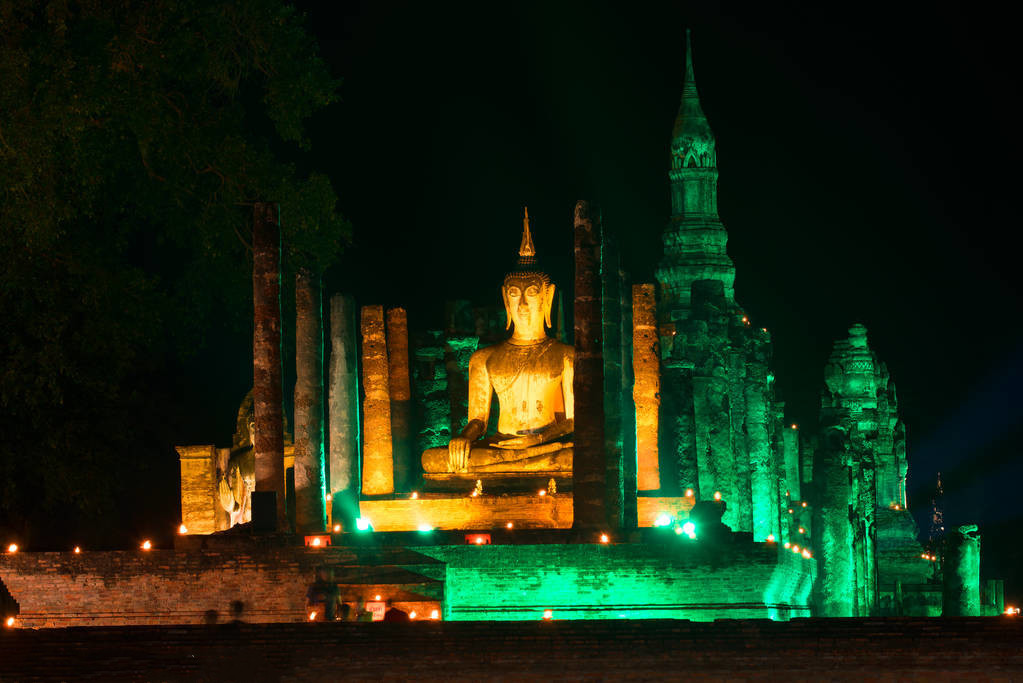How does LED emit red, green and blue light
The luminous color and luminous efficiency of LED are related to the material and process of making LED. At present, red, green and blue are widely used. Because the working voltage of LED is low (only 1.5-3V), it can emit light actively and has a certain brightness. The brightness can be adjusted by voltage (or current). It is shock resistant, vibration resistant and has a long service life (100000 hours). Different materials of LED can produce photons with different energy, which can control the wavelength of light emitted by LED, that is, spectrum or color.
The first LED material in history is gallium arsenide (GA). Its forward PN junction voltage drop (VF, which can be understood as lighting or working voltage) is 1.424v, and the light emitted is infrared spectrum. Another commonly used LED material is gallium phosphide (GA), whose forward PN junction voltage drop is 2.261v, and the light emitted is green. Based on these two materials, early led industrial application Gaas1 xpx material structure can theoretically produce LED with any wavelength from infrared light to green light. The subscript x represents the percentage of phosphorus replacing arsenic.
Generally, the wavelength and color of LED can be determined by the voltage drop of PN junction. The typical ones are gaas0.6p0.4 red LED, gaas0.35p0.65 orange led and gaas0.14p0.86 yellow LED. Due to the use of gallium, arsenic and phosphorus, these LEDs are commonly known as three element light emitting tubes. GaN Blue LED, gap green LED and GaAs infrared LED are called two element led. At present, the latest process is to make four element led with AlGaInN, which is mixed with aluminum (AL), calcium (CA), indium (in) and nitrogen (n). The four element LED can cover all the visible light and part of the ultraviolet spectrum.
What is white LED
Generally speaking, there are two ways to synthesize white LED. The first is RGB, that is, red LED + green LED + blue LED. The main problem of this method is that the conversion efficiency of green light is low. Now the conversion efficiency of red, green and blue LED is 30%, 10% and 25% respectively, and the white lumen efficiency can reach 60lm / W. By further improving the lumen efficiency of blue-green led, the white lumen efficiency can reach 200 LM / W. Due to the different color temperature and color rendering index required by the synthetic white light, the lumen efficiency of each color LED of the synthetic white light is different.
With the further development of deep color matching and white balance of white LED, people hope that the spectrum, chromaticity coordinates, color rendering and related color temperature of white LED used as lighting source can meet the relevant standards of CIE and China, otherwise it should be considered as unqualified.
We summarize the photochromic characteristics of white LEDs with relevant color temperature of 80004000k and their relationship with forward current. For a long time, low color temperature (< 4000K) and high color rendering white LED are difficult to realize according to the current mainstream scheme, which is the combination of InGaN Blue LED chip and CE “activated rare earth garnet yellow phosphor. Because of the lack of red component in the emission spectrum of yellow phosphor. Therefore, most of the reports are limited to high color temperature white LEDs above 5000K.
Although white LEDs are available, there is a lack of low color temperature white LEDs. At present, there are few reports of low color temperature white LEDs composed of blue chips and phosphors. Therefore, it is of great significance to develop low color temperature (< 4000K) high color rendering white LEDs for both academic research and application.
The second way is led + different color phosphors: the first method is to use ultraviolet or purple led + RGB phosphors to synthesize led. The working principle of this method is similar to fluorescent lamps, but its performance is superior to fluorescent lamps. The conversion coefficient of purple LED can reach 80%, and the quantum conversion efficiency of various color phosphors can reach 90%. Another method is to use blue LED + red green phosphors, blue L Led efficiency is 60%, phosphor efficiency is 70%, and blue LED + yellow phosphor is used to form white light.
Compared with the two methods, RGB tricolor LED has better comprehensive performance in synthesizing white light. Under the condition of high color rendering index, the lumen efficiency may be as high as 200 LM / W. the main technical problem to be solved is to improve the electro-optic conversion efficiency of green LED, which is only about 13% at present, and the cost is high.
Wavelength range of green LED
Red light: 615-650, orange: 600-610, yellow: 580-595, yellow-green: 565-575, green: 495-530, blue light: 450-480, purple: 370-410, white light: 450-465.
The different light-emitting colors of LEDs correspond to a certain light-emitting wavelength range, and the light colors almost cover the solar spectrum. At present, ultraviolet, blue, green, yellow, red, and infrared light-emitting diodes have been successfully prepared. In addition, LEDs have low operating voltage, low operating current, and are easy to assemble, making them a new generation of energy-saving and low-carbon light sources.
For the spectral characteristics of LEDs, we mainly look at whether its monochromaticity is good, and we must pay attention to whether the main colors of red, yellow, blue, green, and white LEDs are pure.
The light color that the human eye can observe is the light from 380nm to 780nm in the electromagnetic wave. The color changes with the wavelength; the light is visible and intangible. The color only exists in the eyes and brain of living creatures, which affects the perception of brightness. In addition to the hue of the color, there are also the size of the color area and other visual factors. It is the human eye that causes the same object to appear in different colors in different people’s eyes.
Why use green LED lights under the tree
The relationship between light spectrum and plant photosynthesis
In recent years, the influence of light quality on plant growth and morphology has attracted the attention of researchers. For example, Chinese, European and American academic circles have focused on the impact of LED monochromatic light on the growth characteristics of tissue culture seedlings. Israel uses plastic cloth of different colors as a cover Covering materials to discuss the effects on the growth of leafy vegetables and foliage plants.
The influence of spectrum range on plant biology
★280 ~ 315nm has minimal impact on morphology and physiological processes
★315 ~ 400nnm Chlorophyll absorbs little, affects the photoperiod effect and prevents stem elongation
★400 ~ 520nm (blue) The absorption ratio of chlorophyll and carotenoids is the largest, which has the greatest impact on photosynthesis
★The absorption rate of 520 ~ 610nm pigment is not high
★610 ~ 720nm (red) The absorption rate of chlorophyll is low, which has a significant impact on photosynthesis and photoperiod effects
★720 ~ 1000nm Low absorption rate, stimulate cell elongation, affect flowering and seed germination
★>1000nm converted into heat
In the July (2) issue of Flower Tech in 2004, there is an article discussing the effect of light color on photosynthesis. The author is Mr. Harry Stijger. The subtitle of the article indicates that it is generally believed that the color of light has an effect on photosynthesis. Different, in fact, in the process of photosynthesis, the influence of light color is not different, so using the full spectrum is most conducive to plant development.
The sensitivity of plants to the spectrum is different from that of the human eye. The most sensitive spectrum of the human eye is 555nm, which is between yellow and green light. It is less sensitive to the blue and red light regions. Plants are not the same, and are most sensitive to the red light spectrum. It is less sensitive to green light, but the difference in sensitivity is not as great as the human eye. The most sensitive area of the plant to the spectrum is 400~700nm. This section of the spectrum is usually called the effective energy area of photosynthesis. The energy of sunlight is about 45. % Is located in this section of the spectrum. Therefore, if artificial light sources are used to supplement the amount of light, the spectral distribution of the light source should also be close to this range.
The energy of the photons emitted by the light source is different depending on the wavelength. For example, the energy of a wavelength of 400nm (blue light) is 1.75 times the energy of 700nm (red light). But for photosynthesis, the effect of the two wavelengths is the same. In the blue spectrum The excess energy that cannot be used as photosynthesis is converted into heat. In other words, the photosynthesis rate of plants is determined by the number of photons that the plant can absorb in 400-700nm, and is not related to the number of photons sent out by each spectrum. But the average person’s communication It is believed that the color of light affects the rate of photosynthesis. Plants have different sensitivity to all spectra. This is due to the special absorption of pigments in leaves. Among them, chlorophyll is the most known. But chlorophyll is not The only pigment that is useful for photosynthesis. Other pigments also participate in photosynthesis, so the efficiency of photosynthesis cannot only consider the absorption spectrum of chlorophyll.
The difference in photosynthesis path is also not related to color. Light energy is absorbed by chlorophyll and carotene in leaves. Energy is converted into glucose and oxygen by fixing water and carbon dioxide through two photosynthetic systems. This process uses all visible light spectrum Therefore, the effects of light sources of various colors on photosynthesis are almost the same.
Blue-green LED chip
The working principle of the led is that in the case of forward conduction, the electrons and holes injected into the P/N section of the diode meet and recombine, and the potential energy is converted into light energy. The wavelength of the emitted photon (that is, the color of the light) is determined by The energy band width of a semiconductor is determined. In layman’s terms, the wider the energy band width of a semiconductor, the greater the energy of the emitted photons and the shorter the corresponding wavelength. The material basis of current blue and green LED devices is III-nitride semiconductor, which is a quaternary AlGaInN alloy system mainly composed of GaN and supplemented by InN and AlN.

At present, most of the quantum well light-emitting layer materials of blue and green LED chips are composed of InxGa1-xN alloy and GaN. Because the energy band width of InxGa1-xN alloy varies with the ratio of InN, it can be 3.4eV ( Corresponding to the band width of GaN) and 0.7eV (corresponding to the band width of InN) adjustment, so theoretically this material system can cover the entire visible light spectrum. However, the current material preparation technology is an epitaxial layer growth technology based on GaN crystals, which can only grow alloy materials with a lower InN content. The crystal quality of InxGa1-xN alloy drops sharply after InN composition x>15%.
In fact, the current technical level of the industry usually achieves that the electro-optical conversion efficiency of blue light chips is about twice that of green light, because the InN composition of the former is much smaller than the latter, and the composition of InN in green light devices is estimated to be 30%. % Or more (The determination of the precise composition of InGaN alloy materials is still a difficult scientific problem in academia). In other words, it is difficult for the current technology to continue to increase the composition of InN to enable InGaN alloy devices to emit red light efficiently. But fortunately, as early as the 1990s, the Group III phosphide system (also usually expressed as a quaternary system, AlGaInP) has become a mature material basis for red and yellow LED devices.
After the MOCVD epitaxial growth is completed, a series of photomask patterning and physical etching or deposition processes are required to prepare GaN-based LED chips. The basic structure of ordinary blue and green LED chips requires the following device processing in sequence on the epitaxial wafer: (1) Etching a local area to expose the n-type GaN conductive layer; (2) Evaporating a transparent conductive film NiAu or ITO; (3) ) Vapor-deposited wire electrode, including p-electrode and n-electrode; (4) Vapor-deposit passivation protective layer. The chip processing process requires strict quality management to avoid problems such as insufficient mechanical adhesion of the pad and contamination of surface foreign objects that may easily cause the device to fail during the packaging process.



